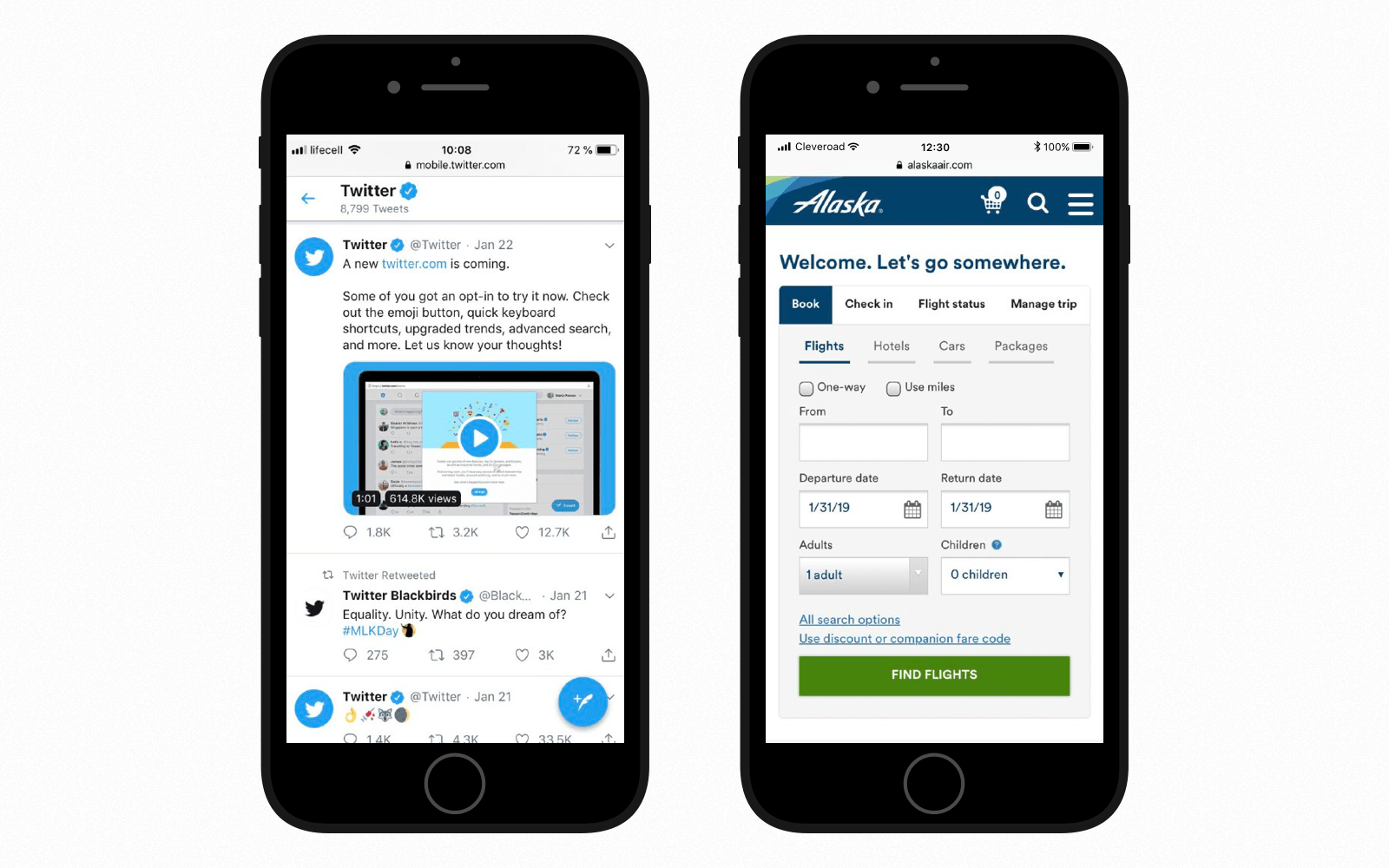Web development trends change to a greater or lesser extent every single year. For decision-makers, it’s vital to be familiar with them for at least two reasons: to sustain ever-rising competition and to sharpen the knowledge.
To save your time and provide a concentrated piece of information about web development trends in 2019, we’ve analyzed market demands in different fields of the IT industry and made up this list based on them.
If you just want to quickly look through the main points, here’s the list of web development trends for 2019 that we’ve considered:
- Progressive Web Apps
- Accelerated Mobile Pages
- Responsive websites
- Voice search optimization
- API-first development
- Push notifications
- AI-powered chatbots
- Motion UI
#1. Progressive Web Apps (PWA)
PWA is probably one of the most impactful trends in web development. It pushes the world wide web forward making website browsing experience closer to native mobile applications and, therefore, more friendly to users.
In a nutshell, PWA is a website which, however, offers functionality traditionally available to native apps (e.g. push notifications, offline access, hardware access).
A recent research shows that mobiles dominate over other devices such as desktops or tablets. Furthermore, there is a serious gap between using mobile apps and mobile browsers. To be precise, applications account for more than 80% of the overall time users spend with their gadgets.
That’s a huge difference and PWAs are able to change the situation for better by troubleshooting issues users hate about websites the most: poor experience, slowness, no offline access.
Examples
Here are some of the world-known companies that have already built a PWA and leverage its benefits for their business:
- Alibaba
- Forbes
- Virgin America
- The Washington Post
These companies mark the following results from PWA strategy adoption: increase in conversions and a decrease of load time.

Technology to Use
If you want to follow the latest web development trends and build a PWA, here is the list of popular technologies for this purpose:
- Angular
- React
- Polymer
Price Difference
Based on our experience, the creation of a complex PWA project takes up to 4x less time compared to native app development for iOS and Android. While the reasons for this are obvious (no need to build an app from scratch for each platform) some products might not need applications at all.
What concerns turning ready-made websites into a PWA, the time required on this type of web development services may vary significantly and depend on the complexity of set tasks.
#2. Accelerated Mobile Pages (AMP)
Google takes serious steps to enhance the mobile browsing experience. The company first introduced Accelerated Mobile Pages Project to publicity back in 2015 and nowadays it’s one of the latest trends of web technologies.
What is it? This technology is created to encourage building websites that load instantly and work very smoothly across mobile devices. AMP pages are loaded for about 2 seconds vs. up to 22 seconds for non-AMP pages.
Sinсe Google loves speedy websites, AMP pages can increase the website’s visibility and contribute to higher positions in SERP. Which means this technology is also great for SEO.
We’ve recently redesigned our website and rebuilt the blog using AMP. The difference is huge. Better try it yourself to feel the gap between regular and AMP pages.
Technology to Use
To build an accelerated page, you should be ready to use a new, purpose-built AMP HTML open framework. Google has launched a website which contains detailed documentation and is full of guides and tutorials. So if you want to introduce AMP technology to your project and thus stick to the latest trends in web development — check the documentation and get started.


























